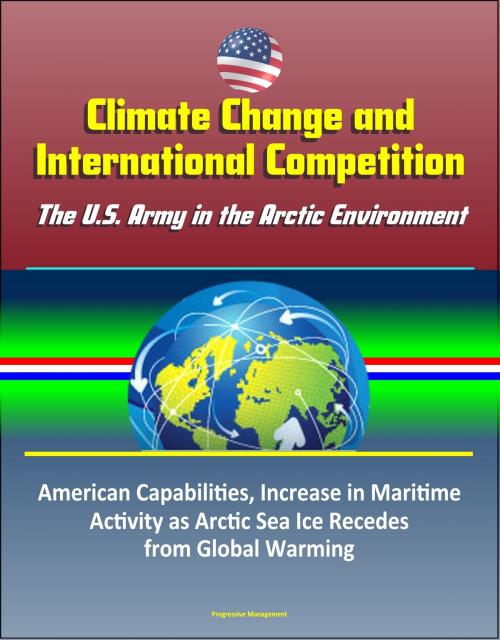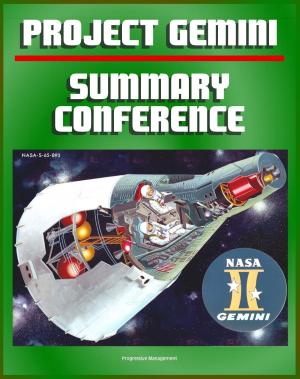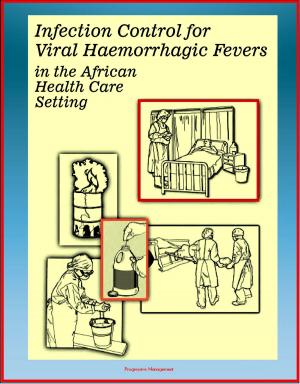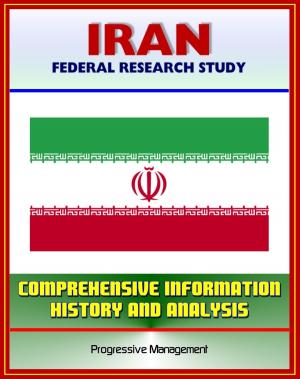Climate Change and International Competition: The U.S. Army in the Arctic Environment - American Capabilities, Increase in Maritime Activity as Arctic Sea Ice Recedes from Global Warming
Nonfiction, Science & Nature, Science, Earth Sciences, History, Military, United States| Author: | Progressive Management | ISBN: | 9781370467563 |
| Publisher: | Progressive Management | Publication: | March 12, 2017 |
| Imprint: | Smashwords Edition | Language: | English |
| Author: | Progressive Management |
| ISBN: | 9781370467563 |
| Publisher: | Progressive Management |
| Publication: | March 12, 2017 |
| Imprint: | Smashwords Edition |
| Language: | English |
This excellent report has been professionally converted for accurate flowing-text e-book format reproduction. As Arctic sea ice recedes due to global warming, the region is facing an unprecedented increase in maritime activity creating new conditions for emerging national security concerns. This research evaluates the United States (US) Army's Arctic capability to determine if it possesses the means to achieve the strategic objectives articulated in the 2013 National Strategy for the Arctic Region and 2013 Department of Defense Arctic Strategy. This monograph argues that the US Army has an Arctic capability gap at the operational level. The capabilities are evaluated within the domains of the current US doctrinal definition of Doctrine, Organization, Training, Materiel, Leadership and Education, and Facilities (DOTMLPF). For the purposes of this monograph, DOTMLPF serves as a broad analytical framework to identify the US Army's Arctic capability gaps. This monograph concludes by addressing how the US Army can align an Arctic capability with the operational requirements of this complex environment.
International competition is likely to rise as nations and corporations pursue additional energy commodities and commercial ventures, including oil and gas exploration, mineral extraction, commercial shipping, tourism, and fishing. According to the United States Geological Survey's 2008 assessment, "the Arctic accounts for about 13 percent of the undiscovered oil, 30 percent of the undiscovered natural gas, and 20 percent of the undiscovered natural gas liquids in the world." The Arctic also includes multiple prominent commercial shipping routes, the Northern Sea Route (NSR) that parallels the northern coastline of Russia, the Northwest Passage (NWP) that runs along the Arctic coast of North America, and the Transpolar Route (TPR) that runs approximately through the center of the Ocean (See Figure 1). Currently, maritime travel in the Arctic is limited, but climate change is gradually uncovering the polar region and projections suggest that, by 2030, retreating ice will allow approximately 55 days of open water access along the NSR and 45 days for the TPR while reliable navigability through the NWP will remain limited.
This excellent report has been professionally converted for accurate flowing-text e-book format reproduction. As Arctic sea ice recedes due to global warming, the region is facing an unprecedented increase in maritime activity creating new conditions for emerging national security concerns. This research evaluates the United States (US) Army's Arctic capability to determine if it possesses the means to achieve the strategic objectives articulated in the 2013 National Strategy for the Arctic Region and 2013 Department of Defense Arctic Strategy. This monograph argues that the US Army has an Arctic capability gap at the operational level. The capabilities are evaluated within the domains of the current US doctrinal definition of Doctrine, Organization, Training, Materiel, Leadership and Education, and Facilities (DOTMLPF). For the purposes of this monograph, DOTMLPF serves as a broad analytical framework to identify the US Army's Arctic capability gaps. This monograph concludes by addressing how the US Army can align an Arctic capability with the operational requirements of this complex environment.
International competition is likely to rise as nations and corporations pursue additional energy commodities and commercial ventures, including oil and gas exploration, mineral extraction, commercial shipping, tourism, and fishing. According to the United States Geological Survey's 2008 assessment, "the Arctic accounts for about 13 percent of the undiscovered oil, 30 percent of the undiscovered natural gas, and 20 percent of the undiscovered natural gas liquids in the world." The Arctic also includes multiple prominent commercial shipping routes, the Northern Sea Route (NSR) that parallels the northern coastline of Russia, the Northwest Passage (NWP) that runs along the Arctic coast of North America, and the Transpolar Route (TPR) that runs approximately through the center of the Ocean (See Figure 1). Currently, maritime travel in the Arctic is limited, but climate change is gradually uncovering the polar region and projections suggest that, by 2030, retreating ice will allow approximately 55 days of open water access along the NSR and 45 days for the TPR while reliable navigability through the NWP will remain limited.















